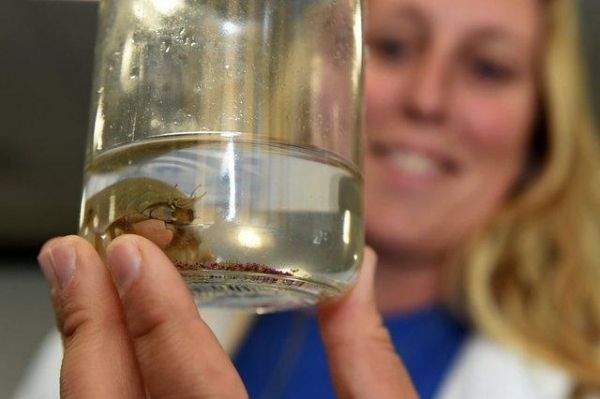Sand crabs, a key species in beach ecosystems, were found to have increased adult mortality and decreased reproductive success when exposed to plastic microfibers, according to a new Portland State University study.
Dorothy Horn, a Ph.D. candidate in PSU's Earth, Environment and Society program, examined the effects of exposure to microfibers on adult mortality, reproductive output and embryonic development of the sand crab, a dominant organism on sandy beaches from British Columbia to Baja California, Mexico. Sand crabs, which eat by filtering small particles from the water, are considered indicator species because their health reflects the health of the ecosystem.
"When pollutants affect sand crabs, it's also affecting most organisms around it in that ecosystem," Horn said. "We don't eat them, but they're a bright blinking light for 'There's a problem in this area.'"
Horn found microplastics in all the sand samples analyzed from 19 beaches along the Oregon coast. She then conducted a lab experiment to mimic the concentrations of microfibers the crabs would be exposed to on the beach.
Read more at Portland State University
Image: A Pacific mole crab, or sandcrab, in an aquarium jar with PSU researcher Dorothy Horn in the background. Horn examined the effects of exposure to microfibers on adult mortality, reproductive output and embryonic development of the sand crab. (Credit: Dorothy Horn)


